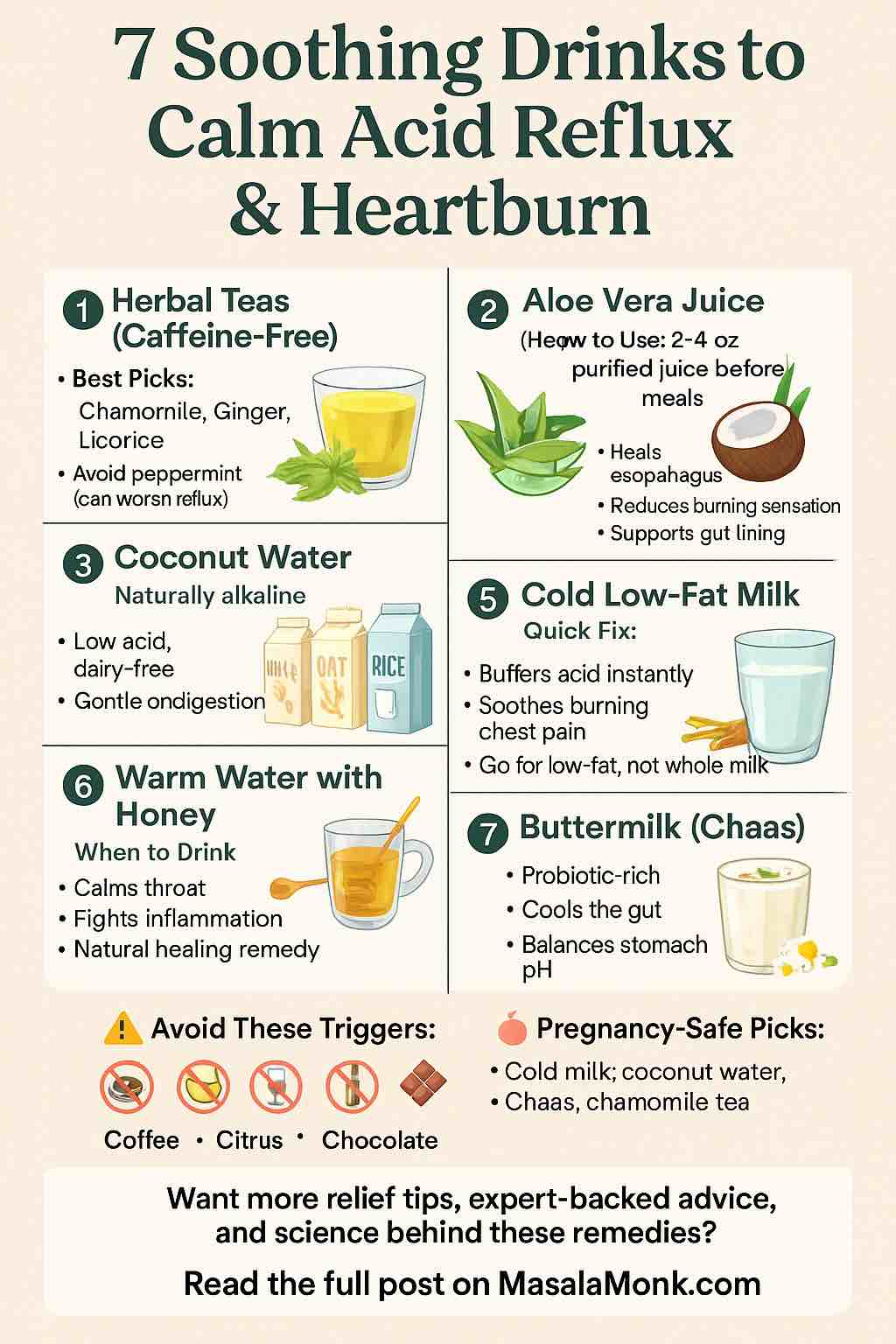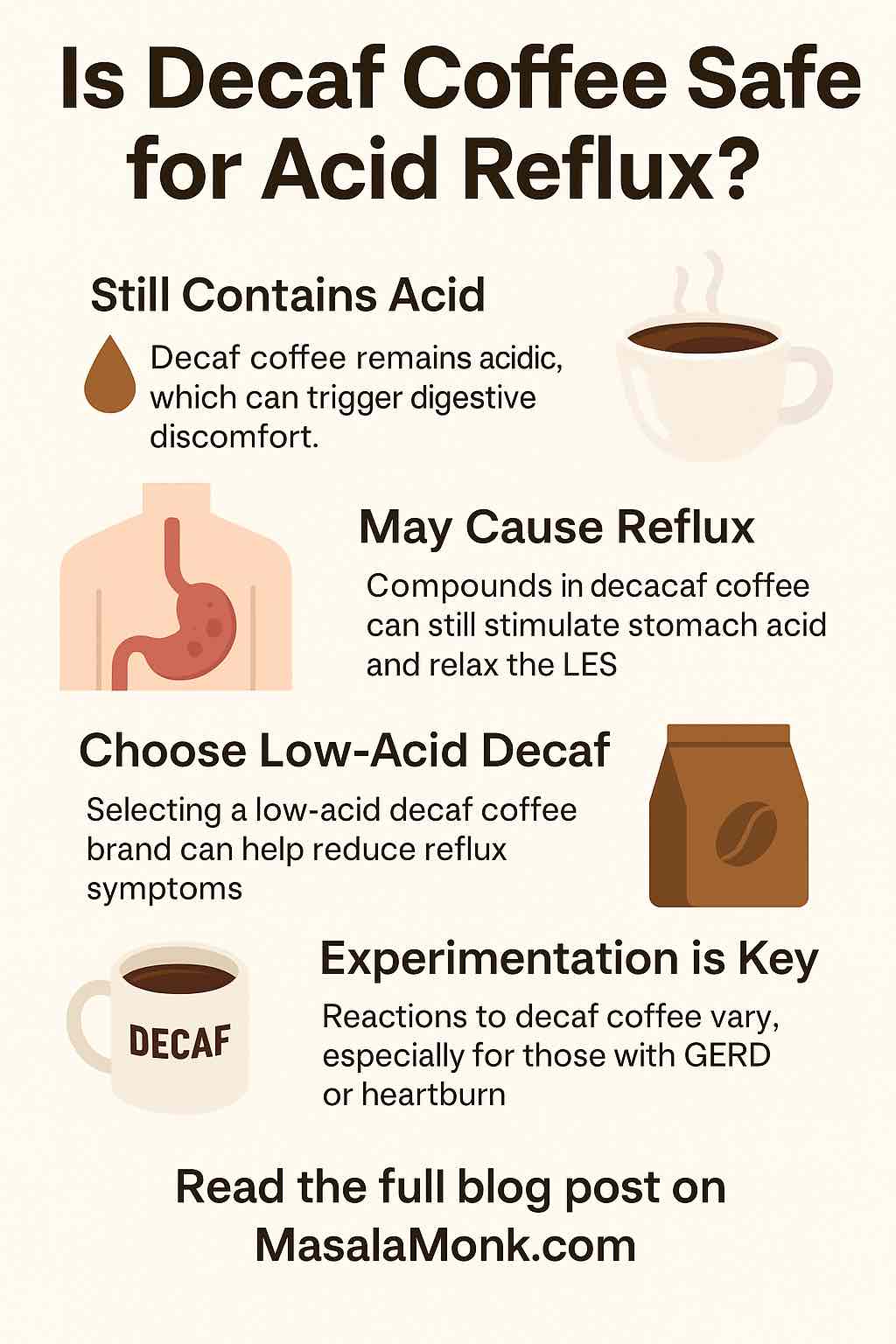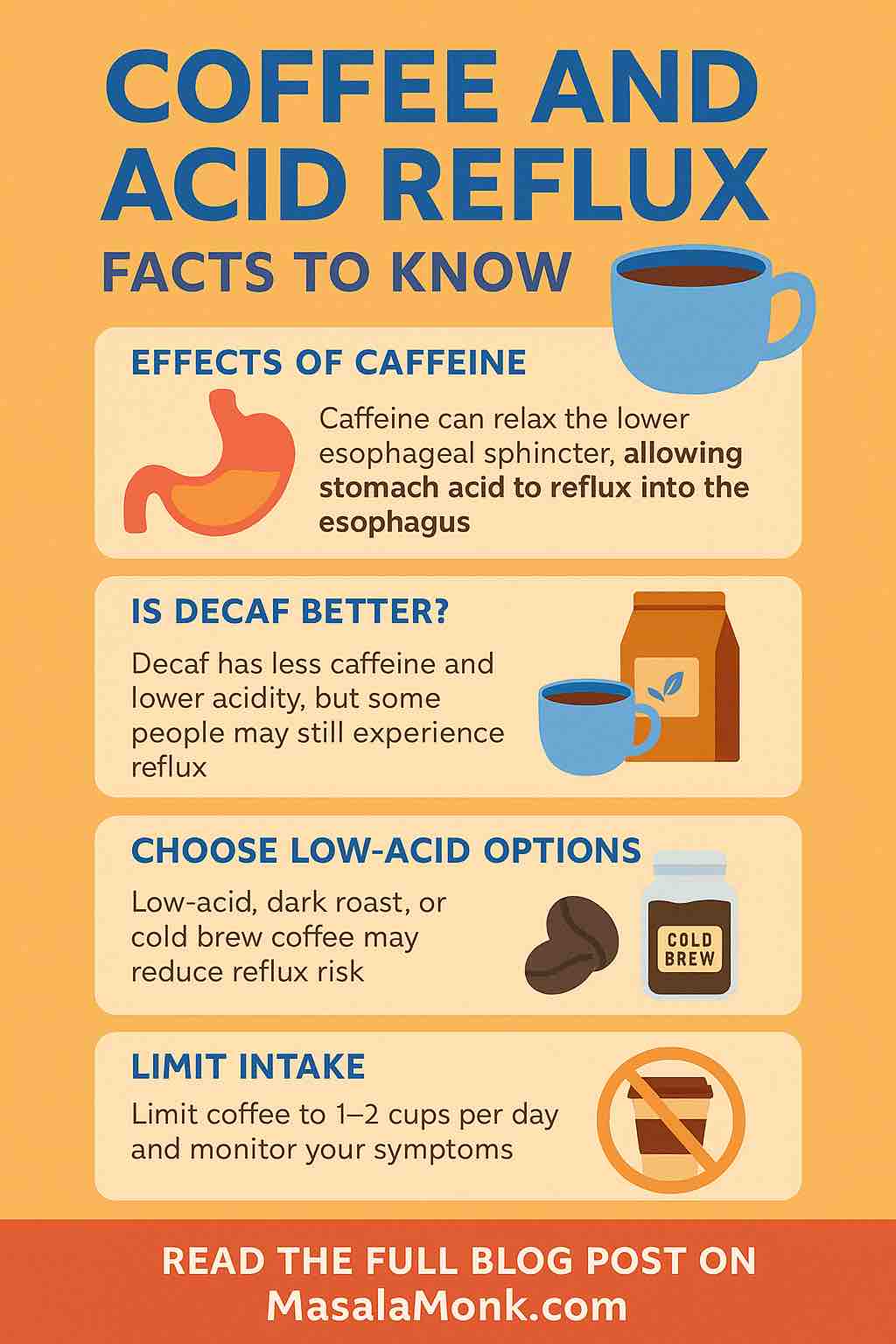
If you’ve ever experienced that uncomfortable burning sensation in your chest or throat after a meal, you’re not alone. Millions of people deal with acid reflux and heartburn every day. While medications can help, your daily choices—especially what you drink—can make a major difference in managing symptoms.
In this post, we’ll dive deep into the best drinks for acid reflux and heartburn relief. You’ll learn why certain beverages can soothe your digestive system while others might make symptoms worse. Whether you’re looking for quick relief, pregnancy-safe options, or long-term solutions, you’ll find what you need here.
Why Beverages Matter for Acid Reflux and Heartburn
Acid reflux happens when stomach acid flows backward into the esophagus, irritating its delicate lining. This backward flow is often due to a weakened lower esophageal sphincter (LES), the muscle that normally keeps stomach contents where they belong.
Beverages influence reflux in several ways:
- Some help neutralize stomach acid.
- Others form a protective barrier over the stomach lining.
- Certain drinks reduce inflammation and promote healing.
Choosing the right drinks not only alleviates immediate discomfort but can also support long-term digestive health.
Best Drinks for Acid Reflux and Heartburn Relief
1. Herbal Teas (Caffeine-Free)
Herbal teas are one of the most effective and natural remedies for acid reflux. Avoid teas with caffeine, as it can relax the LES and worsen symptoms.
- Chamomile Tea: This gentle tea calms the digestive tract, reduces inflammation, and helps you relax—especially useful if stress is a trigger.
- Ginger Tea: A well-known digestive aid, ginger tea can reduce inflammation, nausea, and bloating. Sip it warm after meals.
- Licorice Root Tea: Licorice root may help increase the mucus coating in the stomach, offering added protection against acid.
Avoid: Peppermint tea—it may relax the LES and worsen reflux.
2. Aloe Vera Juice
Known for its healing properties, aloe vera juice can soothe the esophagus and reduce inflammation. Studies suggest it may help reduce heartburn frequency.
- Use decolorized, purified aloe vera juice to avoid laxative compounds like aloin.
- Start with a small amount (2–4 oz) diluted in water.
Pro Tip: Drink aloe vera juice 20 minutes before a meal for best results.
3. Coconut Water
Coconut water is naturally alkaline, helping to neutralize excess stomach acid. It’s also packed with electrolytes that support hydration and overall digestive function.
- Choose unsweetened, pure coconut water for maximum benefit.
- Great to sip between meals.
4. Plant-Based Milks
Dairy can be a common reflux trigger, but plant-based alternatives offer soothing options:
- Almond Milk: Alkaline-forming, helps reduce acidity.
- Oat Milk: Rich in fiber and easy on the stomach.
- Rice Milk: Naturally low in fat and non-irritating.
Look for unsweetened versions to avoid added sugars that could worsen reflux.
5. Cold Low-Fat Milk
For those who tolerate dairy, cold low-fat milk can provide instant relief by buffering stomach acid. It coats the stomach lining and cools the burn.
- Stick with low-fat or skim milk. Full-fat milk may increase acid production.
6. Fennel Water or Fennel Tea
Fennel is a traditional remedy known for reducing gas, bloating, and indigestion—all of which can exacerbate acid reflux.
- To make fennel tea: Crush 1–2 tsp of fennel seeds and steep in hot water for 10 minutes.
- Alternatively, soak fennel seeds overnight and drink the water in the morning.
7. Warm Water with Honey
Honey, especially raw or Manuka honey, has antibacterial and anti-inflammatory properties. It can soothe the esophagus and support healing.
- Mix 1 tsp of honey in a glass of warm (not hot) water.
- Drink it before bed to calm nighttime reflux.
8. Buttermilk (Chaas)
Popular in Indian households, buttermilk is a cooling probiotic-rich drink that supports gut flora and neutralizes stomach acid.
- Add a pinch of cumin or ginger powder for added digestive benefits.
- Drink it chilled, especially after spicy meals.
Drinks to Avoid with Acid Reflux
Certain beverages are known to aggravate reflux. Avoid these if you’re prone to symptoms:
- Coffee (Regular or Decaf): Both can relax the LES.
- Caffeinated Teas: Black, green, and some herbal blends.
- Citrus Juices: Orange, grapefruit, and lemon are highly acidic.
- Alcohol: Weakens the LES and increases acid production.
- Carbonated Beverages: Cause bloating and pressure.
- Chocolate Drinks: Contain both fat and caffeine—double trouble.
What to Drink Before Bed for Nighttime Relief
Nighttime reflux can interfere with sleep and healing. Here are gentle options that soothe without stimulating:
- Chamomile Tea: Promotes digestion and sleep.
- Warm Water with Honey: Coats and calms.
- Alkaline Water: Helps balance pH levels.
- Aloe Vera Juice: Take a small amount before lying down.
Tip: Stop drinking fluids at least 1 hour before bed to avoid reflux from a full stomach.
Pregnancy-Safe Drinks for Heartburn Relief
Hormonal changes and pressure from the growing uterus can trigger heartburn during pregnancy. These drinks are generally safe and soothing:
- Cold Low-Fat Milk: Neutralizes acid instantly.
- Coconut Water: Hydrating and alkaline.
- Buttermilk: A probiotic option that supports digestion.
- Herbal Teas: Chamomile and ginger—consult your OB-GYN first.
Final Thoughts
Managing acid reflux and heartburn isn’t just about what you avoid—it’s also about what you include. With the right drinks, you can soothe symptoms, support digestion, and enjoy your meals without discomfort.
Whether you’re sipping herbal tea, aloe juice, or cooling buttermilk, small changes in your beverage choices can have big effects on your well-being.
Remember, everyone’s body responds differently. Track your symptoms, try different options, and always consult a healthcare provider if symptoms persist or worsen.
Sip smart—and soothe your stomach naturally.
🔍 Frequently Asked Questions (FAQs)
1. What is the best drink for immediate heartburn relief?
Answer: Cold low-fat milk or almond milk can provide instant relief by neutralizing stomach acid and soothing the esophagus. Aloe vera juice is also effective when consumed 20 minutes before meals.
2. Can I drink coffee if I have acid reflux?
Answer: It’s best to avoid regular and even decaf coffee, as both can relax the lower esophageal sphincter (LES), leading to acid reflux. Consider switching to caffeine-free herbal teas like chamomile or ginger.
3. Is it safe to drink lemon water with acid reflux?
Answer: Lemon water is acidic and may trigger reflux in some individuals. However, some people find that a small amount of diluted lemon water, especially with honey, aids digestion. Monitor your own response carefully.
4. What should I drink before bed to prevent nighttime acid reflux?
Answer: Chamomile tea, warm water with honey, and a small amount of aloe vera juice are gentle bedtime options. Stop drinking fluids at least an hour before sleep to avoid pressure on the stomach.
5. Can herbal teas help with heartburn?
Answer: Yes, herbal teas like chamomile, ginger, and licorice root tea can reduce inflammation, aid digestion, and soothe the digestive tract—making them excellent for heartburn relief.
6. Is coconut water good for acid reflux?
Answer: Absolutely. Coconut water is alkaline and helps neutralize stomach acid while keeping you hydrated. Always choose unsweetened versions.
7. What drinks should I completely avoid if I have acid reflux?
Answer: Avoid coffee, alcohol, citrus juices, carbonated beverages, and chocolate drinks. These can either increase stomach acid or weaken the LES, triggering symptoms.
8. What can I drink during pregnancy to ease heartburn?
Answer: Safe options include cold low-fat milk, coconut water, buttermilk, and mild herbal teas like chamomile or ginger. Always consult your doctor before trying new remedies during pregnancy.
9. How does aloe vera juice help acid reflux?
Answer: Aloe vera juice soothes the esophagus and stomach lining, reduces inflammation, and may support mucosal healing. Be sure to use purified, decolorized versions to avoid laxative effects.
10. Can drinking water help acid reflux?
Answer: Yes, sipping water throughout the day can dilute stomach acid and help push it back into the stomach. However, avoid drinking large amounts of water during meals, which can worsen reflux in some people.













